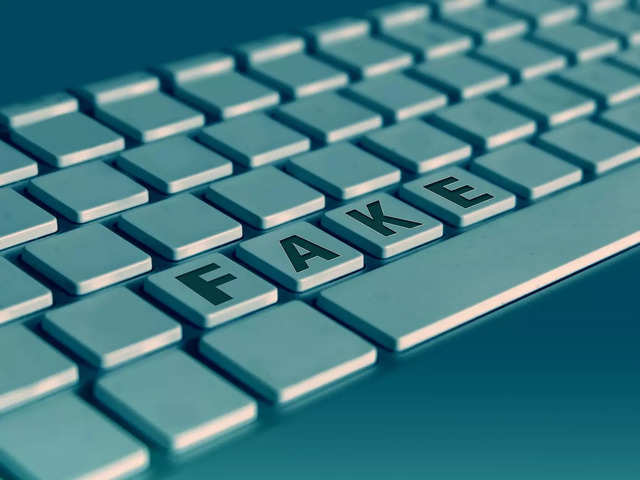
Radhika Apte in RIO's ad
Nobel Hygiene’s RIO was the first brand in India to show period blood-like liquid on TV.
Jul 23, 2020, 10:00 IST
brands
Are consumers ready to see period blood in red? RIO's relaunch of ad and ASCI’s nod on it proves they are
Jul 23, 2020, 10:00 IST
Nobel Hygiene’s RIO was the first brand in India to show period blood-like liquid on TV.
- RIO was the first brand in India to break the cycle of showing blue blood in TV commercials.
- Globally, the advertising watchdogs of only 2 countries have allowed showing the red. ASCI giving a go-ahead to finally representing period blood in TVCs is hopefully the beginning of a new era and a step in the right direction.
- We spoke to Kartik Johari, Vice-President, Nobel Hygiene and Shweta Purandare, Secretary General, ASCI and Brand Experts to understand what kind of complaints did the two receive from consumers, how challenging was it to break an age-old taboo, what kind of research went behind the ad, what role ASCI as an industry body can play in driving change and what the feminine hygiene industry needs to talk about in their ads.
Many Multinational Corporations (MNCs) have misrepresented periods. They show women forgetting about menstrual pains, (which leave me with no strength to even leave my bed) once they use a sanitary napkin. While for some women it is not as painful, (many can dance, sing, play sports while bleeding as shown in commercials), there are many other women who are dealing with very complicated periods and conditions like PCOD and PCOS. There is no representation or mention of period cramps in the commercials we have grown up watching at all.
For someone who has no knowledge of periods, these ads can make them believe that women bleed blue and periods are effortless.
Besides seeing period blood on screen, periods in general are still taboo in India, making it an uncomfortable topic for people to discuss. However, brands have the authority to either drive change in our country, start that much-needed conversation or misrepresent periods, misinform teenagers and continue validating stigmatisation of menstruation.
Nobel Hygiene’s RIO was the first brand in India that woke up to the challenge of breaking this decades-old patriarchal and misleading practice of using blue liquid in its commercials. Even its product packaging has a hint of red, unlike any other hygiene companies that usually use green or blue to denote they stand for ‘purity’ or ‘cleanliness.’
However, RIO’s advertisement wasn’t very welcomed in the country at first. A few consumers reached out to Advertising Standards Council India (ASCI) to lodge a complaint on the usage of blood shown in the commercial.
“The complaints varied in nature but split into three buckets. One was people were simply shocked to see red blood on TV. Second bucket was ‘I saw this ad with my children. How am I supposed to explain this red blood on TV coming out from a balloon to my kids? Third bucket was women themselves feeling that everyone knows what periods are, why do you want to show it on TV? This one woman said that we don’t even discuss our lingerie size in public, how can you show something so private and intimate on TV,” shared Kartik Johari, Vice-President, Nobel Hygiene.
ASCI asked RIO to stop the ad till the jury reached some sort of a decision. After reviewing the ad and getting a pulse of the market, ASCI decided to give the ad a go-ahead with a few minor modifications.
Telling us what kind of modifications the brand was asked to make, Johari said, “We had a very understanding judge in the review process. He suggested only two changes. One, if we can tone down the blood in the end of the ad so we applied a monochrome filter towards the end so the impact of the red is minimised. Second, there was a very prominent image where we showed a blood drop which rests on the pad and is absorbed. The image was very striking. So the judge said if you make these changes, you will make the entire communication very palatable to the audience. We were more than happy to oblige because it left the overall message unharmed. It is a 100% step-forward.”
RIO also made sure that the campaign was led by women to get their perspective and maintain authenticity. While getting women on-board for feminene hygiene products is quite obvious, it isn’t as obvious as you might think. Men continue to lead boardroom conversations and RIO refrained from making an advertisement from the male gaze.
“We took special care to ensure our communication remained as authentic as possible. The entire creative was scripted by a woman, based on real narratives from women, directed and shot by a woman, and is being marketed by women. Additionally, 1000s of women have already applauded our product and messaging; we are proud to have brought this innovation for Indian ladies who receive no respite from Heavy Flow. We are sure that other players in the market are excited by this new paradigm, and we call upon everyone to take advantage of this exciting shift to educate and reconnect with their consumers,” said Johari.
However, RIO’s ad doesn’t mention the word ‘period’ in its ad. Johri said it wasn’t a conscious decision to erase the word out.
“I think what we did not want to do by saying the word period out loud is to try and build an association with the larger sanitary market that already exists. We wanted to establish ourselves very clearly as a specialist product which is a heavy flow pad for women who suffer from PCOD or menopause. It wasn’t a conscious decision to leave the word out, I didn’t even realise that this might be a contention. We tried to show whatever we had in our script with utmost honesty. A lot of the words which Radhika said were from our research study directly. The minute you say ‘heavy flow,’ women who suffer through that would relate to it,” said Johari.
Johari told us that they found a need in the market which they wanted to address. He realised why women with PCOD and menopause needed special pads when he saw his wife struggling.
On why they decided to launch their heavy flow product and ad with Apte, Johari said, “What these 20 years of advertising has done is force this very unfair expectation on women’s shoulders as if they don’t have enough responsibilities already. They expect women to be okay, do every other task while menstruating because it happens every month. ‘What is the big deal in it, this is very normal’ is what they said and this is a very wrong perspective and that’s what we were hoping to address with our ad.”
Globally, the advertising watchdogs of only two countries have allowed showing the red. Many MNCs still refrain from changing the status quo and leaving their comfort zones.
While ASCI doesn’t comment on particular ads, Shweta Purandare, ASCI Secretary General, gave us an insight into what role ASCI as an industry body plays in helping break taboos and how they review ads.
Purandare said, “The number of complaints we receive is immaterial. It’s their validity we need to check. We are required to give the advertiser concerned a chance to share their stand, which is reviewed by an independent Consumer Complaints Council. We must keep in mind that things are evolving quickly - we can’t view advertising through the lens we used to 30 years ago."
She added, “The younger generation wants the right information. So, whether it’s sanitary napkins or condoms, ASCI has been open and contemporary in its approach. Some people say lingerie ads shouldn’t be printed in newspapers, but it’s a product like any other - you need to show it to be able to sell it. The execution of the advertisement is critical - is it coming across as vulgar, for example? That’s something we take into account. Context is very important too. We also ensure that ads don’t denigrate a gender or look down upon people of colour.”
This campaign from RIO marked the beginning of a new era and took a step in the right direction. It will create more conversations, to help bring about a revolution in Female Hygiene in India, where only 50% women have access to female hygiene products and almost 100% approach menarche unprepared.
We also spoke to experts to find out how far the ad industry has come in accepting menstruation and breaking the stigmas around it.
Ronita Mitra, Founder and Chief Strategist, Brand Eagle Consulting, said, “While the brand may have felt that it is important to show reality as it is and break existing codes of communication in the category, advertising or any form of communication is more impactful when done in an appealing manner, without of course, losing focus on impact of messaging. And messaging impact is not necessarily achieved only when the actual reality is showcased. To achieve messaging impact, it is important to speak to the consumers' intelligence and the consumer is able to process metaphorical communication just as effectively, and does so in a manner that makes the communication more appealing, more memorable and more effective. Metaphorical should not be confused with shying away from the problem - it's just a more intelligent, sophisticated, evolved and therefore more intelligent way of showing the problem.
Further, for any brand, TV advertising is not the only form of communication. The route that RIO has taken in the ad, could well have been taken via other elements of the Marketing Plan such as Activation, small group education which allows for discussion, interaction, Q&As. That would have helped the brand to balance appeal with directness in communication.”
Srishty Chawla, Founding Partner, One Source said, "I appreciate and support the change to mentality and society RIO is trying to bring about with this commercial. Breaking incorrect perceptions around menstrual blood being dirty is not just crucial, it's an imperative.
This ad is a step in the right direction of destigmatising menstruation and period blood, by talking about them and showing blood for what it is - red in colour. Brands need to take a leaf out of this book, and understand that by showing the blue gel for period blood, they're furthering the stigma. I mean, human blood isn't blue. We aren't cold-blooded. It is misleading! As is showing women in white pants, gleefully running around, with a menstrual pad on. That isn't how things work in real life. Periods are not happy. In most cases, they are messy, and painful. And as far as white pants go, I am terrified of even looking at whites during my period days, lest I stain them.
I also noticed that Rio omitted the usage of the word ‘period’ in their ad, while it is clear that they are talking about periods. Why not just say it? Use the word. Break the taboo! Even without using those words, just by using red to signify blood, instead of blue to signify god knows what, I believe people will get shaken out of their comfort zones. Colours play a very important role in consumer perception and it is high time women-related communication uses empowering and bold colours! While new-age brands are taking risks and embracing change, in my opinion, larger brands also need to talk openly about, and break the stigma that is, menstruation.”
Here is hoping that more companies join RIO, wake up and realise that blood has always been red and normalise talking about menstruation.
INSIDER INTELLIGENCE REPORTS







